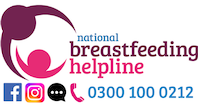This information can also be viewed as a pdf by clicking here.
The information provided is taken from various reference sources. It is provided as a guideline. No responsibility can be taken by the author or the Breastfeeding Network for the way in which the information is used. Clinical decisions remain the responsibility of medical and breastfeeding practitioners. The data presented here is intended to provide some immediate information but cannot replace input from professionals.
Mothers can have general anaesthetic and breastfeed as normal as soon as they are awake and alert following surgery. Care should be taken with co-sleeping that evening.New guidelines from the Assoc of Anaesthetists Aug 2020 https://onlinelibrary.wiley.com/doi/full/10.1111/anae.15179 |
For information on the use of Local anaesthetics whilst breastfeeding please see https://www.breastfeedingnetwork.org.uk/local-anaesthetics/
For information on the use of Local anaesthetics during dental procedures whilst breastfeeding please see https://www.breastfeedingnetwork.org.uk/dental-treatment/
Some women need to have operations under general anaesthetic whilst they are breastfeeding. Some healthcare professionals and mothers are concerned about the safety of the baby who may be exposed to anaesthetic agents via their mother’s breastmilk. This adds to the stress of many mothers undergoing procedures – minor or major. The risks of mastitis in the mother should not be ignored if she is told to pump. There is no evidence of the need to dump any milk expressed following anaesthesia.
Mothers who undergo caesarean sections under general anaesthetic (usually as an emergency procedure) are encouraged to breastfeed as soon as possible after delivery. In some cases babies are helped to latch whilst the mother is still in the recovery room and drowsy. Anecdotally many mothers are advised to pump and dump their breastmilk for 24-48 hours after anaesthetic even for a short operation in order to clear the body of the drugs rather than simply to maintain supply. This is not necessary.
General anaesthetics have very short half-lives and are redistributed in the body within minutes which is why they have to be infused continuously during operations. Some is stored within the fat cells of the body and gradually released over the following 24-48 hours but the level of drug released from a short procedure is unlikely to cause any greater effect than drowsiness in the baby.
In most cases of minor surgery the mother is wide awake within minutes of the end of the operation. Even with major surgery recovery from the anaesthetic is short although drowsiness may then result from opiate pain killers injected in theatre. Once a mother is awake enough to recognise that she has a baby who needs to be breastfed the level of anaesthetic in her blood is likely to be small.
Consideration does however need to be given to;
- Who will look after the baby whilst mum is in surgery?
- If the mother is to remain in hospital overnight are there facilities for the baby to remain with her?
- If so is she happy for the baby to be there?
- Is there someone who is available to look after the baby but bring it to mum when a feed is needed?
- If the baby is not to stay with the mother does she have access to a breast pump and somewhere to store the milk safely for it to be given to the baby later?
- Is she able to express milk for the baby? We need to avoid the risk of mastitis if mother and baby are separated.
- Is it possible to delay the operation until after weaning? This may not be an option nor should a mother be pressurised into weaning in order to have an operation. Breastfeeding and anaesthetic are not normally mutually exclusive.
Bibliography
- Mitchell J, Jones W, Winkley E, Kinsella. S.M Guideline on anaesthesia and sedation in breastfeeding women 2020. Guideline from the Association of Anaesthetists. First published: 01 August 2020 https://doi.org/10.1111/anae.15179
- Spigset O. Anaesthetic agents and excretion in breast milk. Acta Anaesthesiol Scand. 1994 Feb;38(2):94-103
- Nitsun M, Szokol JW, Saleh HJ, Murphy GS, Vender JS, Luong L, Raikoff K, Avram MJ. Pharmacokinetics of midazolam, propofol, and fentanyl transfer to human breast milk. Clin Pharmacol Ther. 2006 Jun; 79(6):549-57.
- Schneider P, Reinhold P. Anesthesia in breast feeding. Which restrictions are justified? Anasthesiol Intensivmed Notfallmed Schmerzther 2000 Jun;35(6):356-74.
- Hale T.W Anaesthetic Medications in Breastfeeding Mothers.
- ilca.org/education/Anesthetic%20Meds.pdf
- Jones W Breastfeeding and Medication 2nd Ed Routledge 2018
© Wendy Jones PhD, MRPharmS and the Breastfeeding Network March 2022

